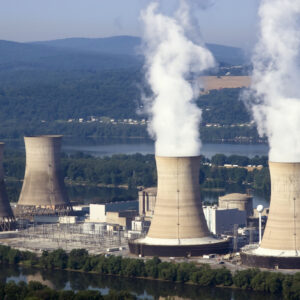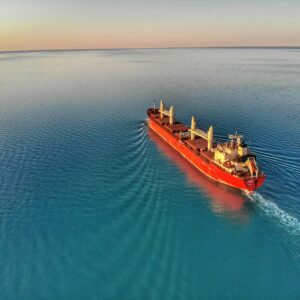Mark Mills writes in The Wall Street Journal about AI’s role in bringing back Three Mile Island. The news that Microsoft plans to fund the reopening of the undamaged reactor at Pennsylvania’s Three Mile Island nuclear plant spread almost as quickly as news about the nuclear accident at that same site in 1979. Microsoft’s decision was animated,...
Sodium solid-state battery shows stable performance, 91% efficiency after 500 cycles
Abhishek Bhardwaj of Interesting Engineering writes about the efficiency of solid-state batteries. Australia-based Altech Batteries has announced that its first Cerenergy ABS60 battery prototype is online and operating successfully at its joint venture partner Fraunhofer IKTS’ test laboratory in Dresden, Germany. The prototype 60 kWh sodium chloride solid-state battery energy storage system has been integrated...
The Small Modular Reactor Revolution Is Arriving Soon
Most recently, on September 20, Microsoft and Constellation announced that they will reopen a reactor at Constellation’s Three Mile Island nuclear energy center in Pennsylvania to power Microsoft data centers. Microsoft agreed to pay $16 billion to restart the Unit 1 reactor which has a capacity of 835 megawatts. It was shut down in 2019 under financial pressure from growing competition with cheap natural gas. (The Unit 2 reactor was destroyed in 1979 accident and is undergoing decommissioning; however, the U.S. Nuclear Regulatory Commission (USNRC) noted there were no deaths or accidents, or discernible health effects from some small radioactive releases.) Microsoft has agreed to buy up to 100% of the electricity produced by Unit 1. This is part of the tech giant’s efforts to secure enough reliable, low-carbon electricity to supply its energy-thirsty data centers powering the boom in artificial intelligence.
This Digital Sprinkler System Will Help Cut Your Water Bill in Half
Irrigreen is an AI-powered irrigation platform with an internet-connected interface that lets homeowners control and monitor their irrigation needs via an app, optimizing water usage.
New Partnership Develops Innovative AI Monitoring for Elephants
Artificial intelligence is being utilized to identify, monitor, and protect African forest elephants.
How the Oil-Guzzling Shipping Industry Is Trying to Clean Up
"As of June, about half of ships on order — measured by gross tonnage — will be able to run on alternative fuels including LNG, according to ship-classification society DNV. Maersk is one of several shipping companies that have ordered methanol-capable vessels."
Can These AI-Assisted Robotic Sorters Usher In a New Era of Recycling?
The U.S. generates more trash per capita than any other nation, with an average of just under 1,800 pounds per person. The private sector is stepping up to help by improving waste management practices.
New lightning-fast trick charges EV battery 80% in 9 mins, lasts 300+ cycles
"The team used heteroatom doping, a process in which foreign atoms, known as heteroatoms, are intentionally introduced into a material’s structure to modify its properties. In the context of battery materials, this typically involves replacing some atoms in a material (like carbon) with different atoms (such as nitrogen, sulfur, or phosphorus)."
Project Pele, DOD’s HTGR Mobile Nuclear Microreactor, Breaks Ground
"Groundbreaking marks an essential phase of the much-watched program. The program launched in 2016 in response to a Defense Science Board study, which evaluated the DOD’s need for a mobile, reliable, and resilient power source that minimizes logistical demands. The study recognized that battlefield energy needs would dramatically increase with the rise of energy-intensive military systems. It identified nuclear power—which offers two million times the energy density of diesel—as an ideal solution."
World’s Biggest Cement Producers Bet on Green Alternative
"In tests at its 250-ton-per-year pilot plant, Sublime has been able to demonstrate a 90% reduction in CO2 emissions compared to traditional concrete, according to Leah Ellis, co-founder and chief executive officer. The company is developing a commercial plant in Holyoke, Massachusetts, that would have a capacity of 30,000 tons per year and is set to be completed in 2026. Ellis said Sublime’s goal is to provide its technology to larger cement companies with existing infrastructure and supply chains, which would either build new cement plants with the tech or retrofit old ones."









